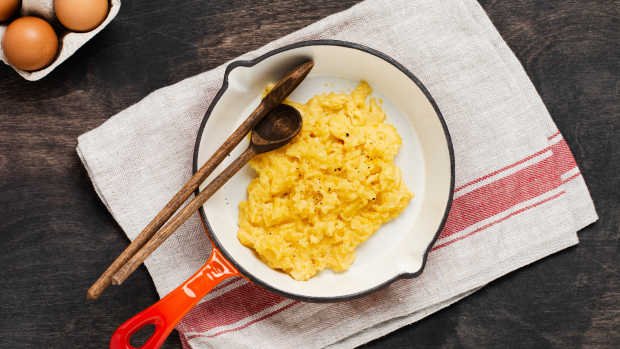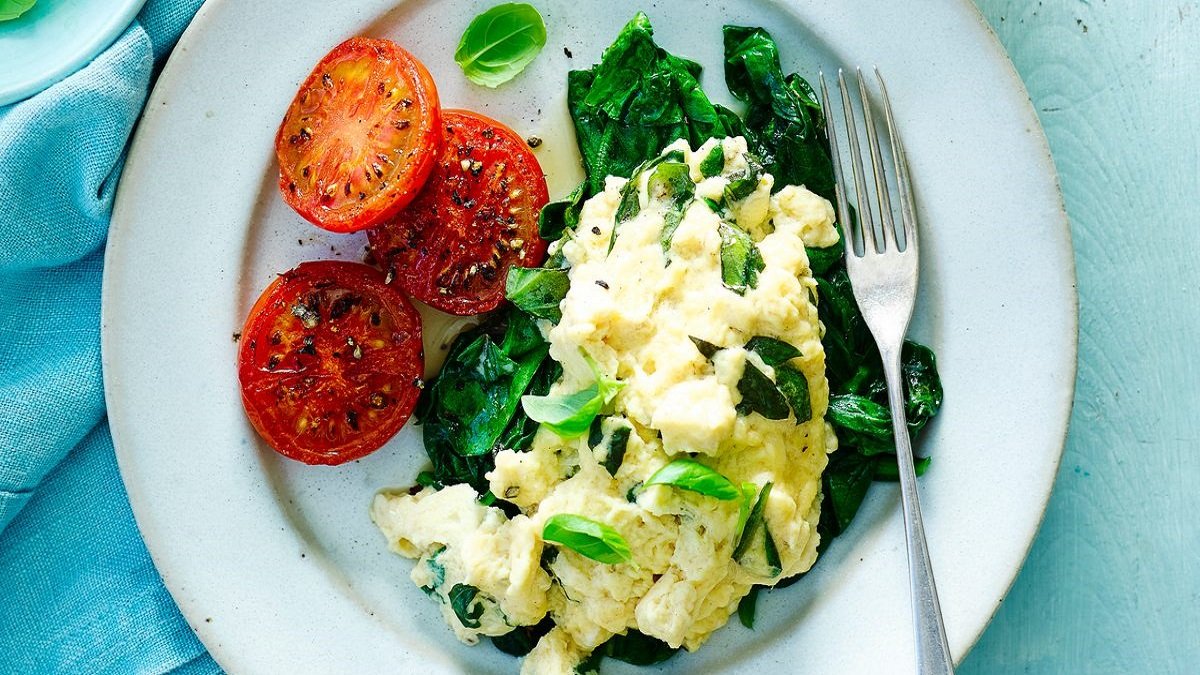We offer a ton of high-protein, low-calorie breakfast ideas to enjoy in the morning, from fruit and omelets to nutritious cereals, whether you’re on the 5:2 diet, counting your daily caloric expenditure, or searching for breakfast under 200 calories.
Since breakfast is the most significant meal of the day, you must have a hearty, high-energy breakfast to raise your blood sugar levels as soon as you get up. You frequently have few options for breakfast while following stringent calorie-restricted diets like the 5:2 diet plan, but that doesn’t mean you should forgo it entirely.
Low-Calorie But High In Protein Breakfast

1. Boiled Eggs
Eggs are a nutritional powerhouse low-calorie breakfast since they are high in protein and vital vitamins and minerals like riboflavin and selenium.
Additionally, due to their high protein content, research has indicated that eating eggs for breakfast may help decrease hunger. Losing weight can be greatly accelerated by doing this.
2. Sweet Potatoes
Eating a sweet potato first thing in the morning may sound strange, but it’s a smart move. In addition to being rich in minerals like potassium and beta-carotene, a full sweet potato with skin contains almost 6 grams of fiber.
This slow cooker dish has several possibilities for toppings. We like the combination of a quarter cup of Greek yogurt, a quarter cup of blueberries, and two teaspoons of pomegranate seeds. Best for 241 calories, 8 grams of fiber, and 10 grams of protein are found in this satisfying combination.
3. Veggie Omelet with Cheese, Spinach, and Cauliflower
This low-calorie breakfast, packed with vegetables and a full omelet, is well worth the extra few minutes in the morning.
You can increase your intake of fiber by eating cauliflower rice, spinach, and mushrooms. This breakfast is a blue ribbon winner—it has only 350 calories, 3 grams of fiber, 20 grams of protein, and 190 milligrams of calcium.
4. Wheat Germ
Wheat germ, which is a portion of the wheat kernel, contains a variety of vitamins and minerals, including selenium, thiamine, and manganese. It is also exceptionally high in fiber, with roughly 4 grams (g) per 1-ounce (28-gram) serving.
Research suggests that eating cereal grains may aid in weight loss because, among other possible advantages, it increases fiber consumption. However, more research is needed to fully understand how grains affect metabolism and weight.
5. Cucumber Cottage Cheese Toast
The revival of cottage cheese never ceases to amaze us! This low-calorie breakfast creative toast concept is a great way to start the day.
On hectic mornings, chop the cucumber ahead of time to save time. A single slice has 45 milligrams of calcium, 13 grams of protein, 6 grams of fiber, and 420 calories. Reduce the amount of olive oil to one or two teaspoons if you want to reduce the calories.
6. Bananas
In one sitting, a medium banana can meet up to 11% of your daily fiber needs thanks to its 3 g of dietary fiber and little over 100 calories. Bananas are low in calories and high in fiber. Research indicates that consuming more fiber from fruits and vegetables is associated with higher weight loss.
Moreover, unripe bananas contain a lot of resistant starch, which is a type of starch that cannot be broken down in the stomach or small intestine. Research suggests that resistant starch may help reduce food intake and belly obesity.
7. Smoothies
Smoothies provide you with a concentrated dose of nutrients. Because you may select the ingredients for your drink, you can customize it to your preferences. You may boost your intake of fiber in your smoothies by adding additional fruits and vegetables that are low in calories. This will help your gut bacteria and help you feel satiated for longer.
Add some high-protein foods, such as yogurt, tofu, or protein powder, to promote satiety and prevent cravings. However, if you use a lot of calorie-dense ingredients, smoothies can pack on the calories. For a simple smoothie to help lose weight, blend together one cup (285 g) of Greek yogurt, one cup (144 g) of strawberries, two teaspoons (28 g) of chia seeds, and some leafy greens.
8. Grapefruits
Grapefruits are low in calories and high in water and fiber, two nutrients that can help with weight loss. Consuming citrus fruit may aid in weight loss or maintenance, according to research. This could be especially the case because grapefruit and other citrus fruits have substances called polyphenols, such as naringenin, which can help shield the metabolism.
Nevertheless, there have been conflicting studies on grapefruit, necessitating further investigation into the fruit and weight in particular. Before consuming grapefruit, make sure to speak with your doctor or pharmacist if you take any medications. Grapefruit and several medications may interact negatively and have unfavorable effects.
9. Oatmeal
Oats are rich in fiber and protein, two nutrients that affect hunger and weight control, yet they are low-calorie breakfasts to keep you full. Oats are a great source of beta-glucan, a type of fiber that has been linked to several health benefits, including improved heart and immune system performance.
According to research, beta-glucan can help keep blood sugar levels in check by preventing spikes and crashes that could make you feel more hungry. This suggests that consuming oats may aid in controlling your appetite and preventing overindulgence, both of which may promote weight loss.
Why Does Protein Matter?
A healthy diet that includes a low-calorie breakfast with adequate protein throughout the day can have a major impact on your ability to lose weight. Protein takes longer to digest, which contributes to a longer sensation of fullness. You’re more likely to feel content rather than hungry when you consume meals high in protein at every meal, which is crucial while cutting calories to lose weight. Try to consume 50 g or more of protein each day.
You can see all the delectable meals you may cook when sticking to a low-carb diet for weight reduction by looking at the high-protein, low-carb breakfast ideas we share below. You won’t have an excuse not to eat breakfast, with everything you need to get going, items to use, recipes to test, and advice on how to enjoy these low-carb breakfasts on the go.
FAQ
Q: What is the amount of low-calorie breakfast?
A: A nutritious, low-calorie (between 300 and 500 calories) and well-balanced breakfast should emphasize protein, healthy fats, and high-fiber carbohydrates.
Q: Which breakfast is better, low-calorie or high-calorie?
A: A high-calorie breakfast has been associated with reduced sugar cravings and hunger attacks during the day. A low-calorie meal increases the likelihood of throughout-the-day snacking when compared to a heavier breakfast.
Q: What makes a nutritious, hearty breakfast?
A: Consuming foods strong in fiber, protein, or both can help you feel fuller for longer periods and reduce your tendency to reach for unhealthy morning snacks. Yogurt, eggs, and cottage cheese are examples of high-protein foods. Serve them with wholesome, high-fiber foods like fruit, oats, and whole-meal bread.











